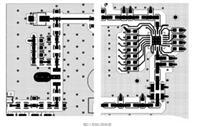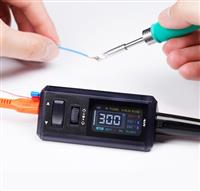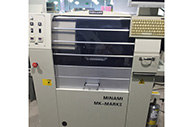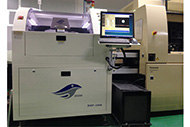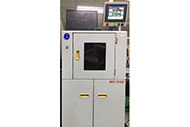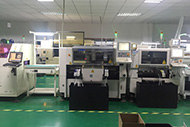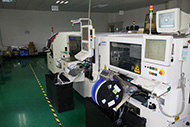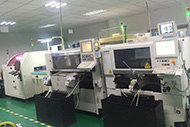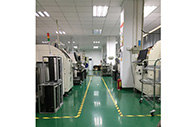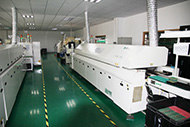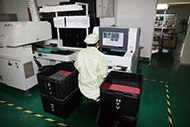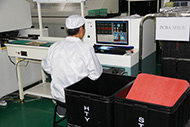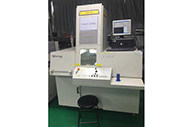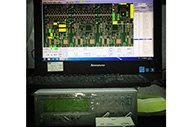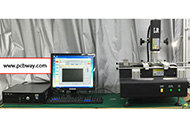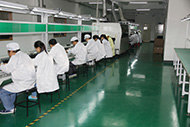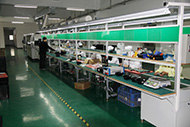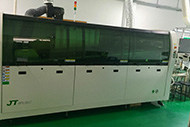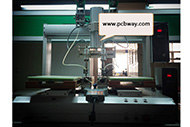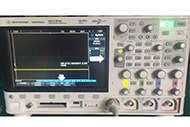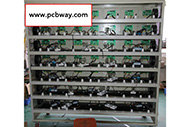表面実装プロセス
もともと、すべてのPCBははんだごてだけを使って手作業で組み立てられていました。 技術が進歩するにつれて、構成要素は手で組み立てることがより小さくそしてより困難になり、そして単一のボード上に収まることができる構成要素の量は増加する。 そのため、自動組立の必要性が生まれました。
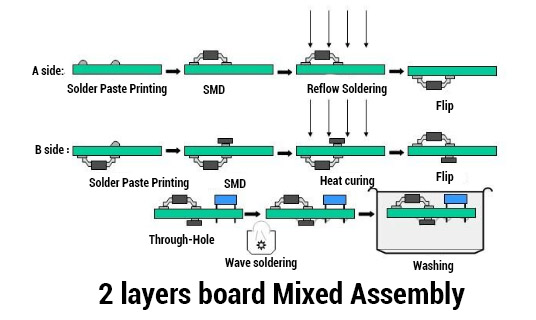
必要な要素
以下は自動実装に必要な要素です:
-
Gerbers in 274-X (embedded apertures) including fabrication drawing.
-
Part centroid text file with Reference Designators, external placement layer, and X & Y location and rotation in ASCII format.
-
Numerical control (NC) drill files
-
Solder paste file (one of the Gerber files) for all sides mounted
-
Glue dot file
-
可能であれば、データベースを設計し、データベース形式(プログラム名)を指定してください。
-
部品リストまたはBOM(部品表)
-
必要な部品またはハードウェア
Gerberファイルはパッドの位置を定義し、アセンブリハウスがピン1の位置を決定し、ボードの外観を把握するのに役立ちますデータベースはピン1の位置を決定するのにも使用できます。 どのように、そしてなぜ集会所がステンシルを作るのかを学び、それを複製してそれぞれから一貫性を保つのは良いことです。 はんだペーストファイルは、はんだ付けされる部分を除いてボード全体をマスクするために使用され、露出したパッドにはんだペーストが塗布され、ステンシルが除去されます。 また、部品が基板にはんだ付けされるときに、部品を固定しているはんだペーストと接着剤の点で基板に固定されます。
部品配置の場合、部品配置/centroidファイルで部品の部品がどこにあるのかを知る必要がありますレイヤIDは部品が配置されている側を示し、回転は部品の向きを表示します。
設計者のソフトウェアが矛盾を考慮できない場合を除き、元のコンポーネントの回転の一貫性が重要です。
NCドリルファイルを使用して、取り付け穴の位置を特定し、スルーホール部品の穴サイズを提供しますこれにより、組み立て工場でも部品リードの適切なクリアランスを決定できます。
部品表または部品リストを使用して、centroidファイルの指示子およびマウントする必要があるコンポーネントを参照します。 部品がSM部品なのかDIP部品なのかについても、BOMは情報を提供する必要があります。
その他の考慮事項
自動組み立てに関するその他の考慮事項は、ボードサイズ、パネルサイズ、およびブレークアウェイです。 ボードは一般的に多くのボードを含むことができるパネルに組み立てられます。 パネルは、ボードがエッチングされた元の素材です。パネルは、すべてのボードがそのままの状態で組み立て工場に渡されます。
説明
Breakawaysは、組み立て中にボードを保持するボード周囲の接続ですが、ボードを取り外すときには簡単に壊れる可能性があります。
1.ボードの注文
PCBWayワンストップ基板と部品実装ソリューション,
2.DFMチェック
The DFM check looks at all the design specifications of a PCB. Specifically, this check looks for any missing, redundant or potentially problematic features. Any of these issues may severely and negatively influence the functionality of the final project. For example, one common PCB design flaw is leaving too little spacing between PCB components. This can result in shorts and other malfunctions.
By identifying potential problems before manufacturing begins, DFM checks can cut manufacturing costs and eliminate unforeseen expenses. This is because these checks cut down on the number of scrapped boards. As part of our commitment to quality at a low cost.
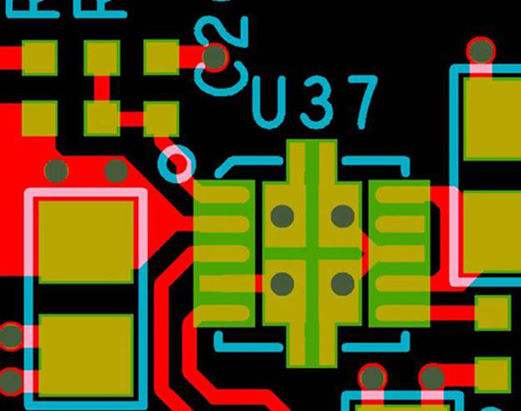
3.仕入れ品質管理(IQC)
PCBWay Verifying all incoming materials and handling quality problems before subsequent SMT assembly begins. Our IQC position will check following issues of incoming materials if they comply with our strict requirements.
• BOMリストに基づく型番と数量をリストアップする
• 特にICまたはその他の複雑なコンポーネントの形状(変形、破損したピン、酸化など)
• テストスタンドやマルチメーターなどのツールを使用した材料のサンプルテスト。
• 上記の欠陥または不一致が発生した場合、当社はすべての材料をサプライヤーまたは顧客に返却します。
4.機械プログラミング-Gerber / CAD to Centroid / Placement / XY file
Having received the PCB panels and components the next step is to setup the various machines used with the manufacturing process. Machines such as the placement machine and AOI (Automated Optical Inspection) will require a program to be created which is best generated from CAD data but quite often this isn't available. Gerber data is almost always available as this is the data required for the bare PCB to be manufactured.
5.はんだペースト印刷
製造プロセスでセットアップする最初のマシンは、PCB上の適切なパッドにステンシルとスキージを使用してはんだペーストを塗布するように設計されたはんだペーストプリンタです。
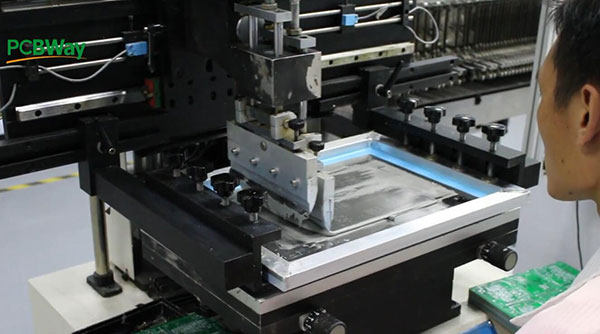
6.部品プレイスメント
Once the printed PCB has been confirmed to have the correct amount of solder paste applied it moves into the next part of the manufacturing process which is component placement. Each component is picked from its packaging using either a vacuum or gripper nozzle, checked by the vision system and placed in the programed location at high speed.
There is a large variety of machines available for this process and it depends greatly on the business to what type of machine is selected. For example if the business is focused around large build quantities then the placement rate will be important however if the focus is small batch/high mix then flexibility will be more important.
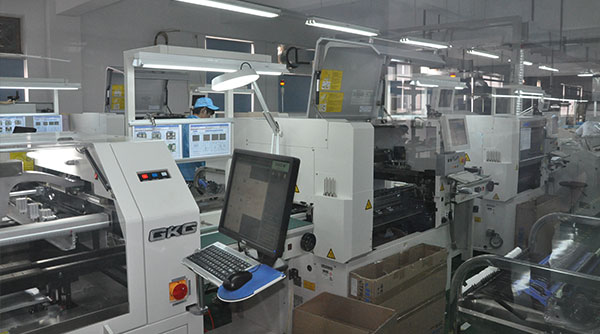
7.リフロー前自動光学検査(AOI)
コンポーネントの配置プロセスに続いて、リフローはんだ付けの前に間違いがなく、すべての部品が正しく配置されていることを確認することが重要です。 これを行う最良の方法は、AOIマシンを使用して、コンポーネントの存在、タイプ/値、極性などのチェックを行うことです。
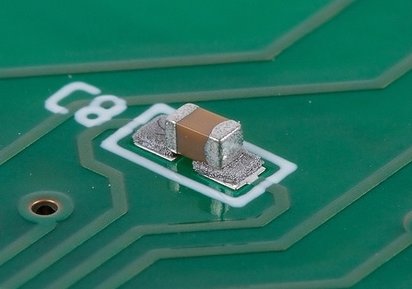
8.リフローはんだ付け
Once the components are placed on the boards, each piece is sent through our reflow machines. This means the solder paste needs to solidify, adhering components to the board. PCB assembly accomplishes this through a process called "reflow".
This would appear to be one of the less complicated parts of the assembly processes but the correct reflow profile is key to ensure acceptable solder joints without damaging the parts or assembly due to excessive heat.
When using lead-free solder a carefully profiled assembly is even more important as the required reflow temperature can often be very close to many components maximum rated temperature.
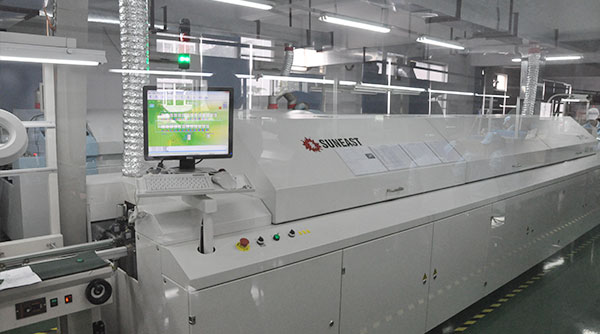
9.リフロー後の自動光学検査(AOI)
The last part of the surface mount assembly process is to again check that no mistakes have been made by using an AOI machine to check solder joint quality.
Often, movement during the reflow process will result in poor connection quality or a complete lack of a connection. Shorts are also a common side effect of this movement, as misplaced components can sometimes connect portions of the circuit that should not connect.
Checking for these errors and misalignments can involve one of several different inspection methods. The most common of these inspection methods include the following:
- 手動チェック
- 自動光学検査(AOI)
- 自動X線検査(AXI)
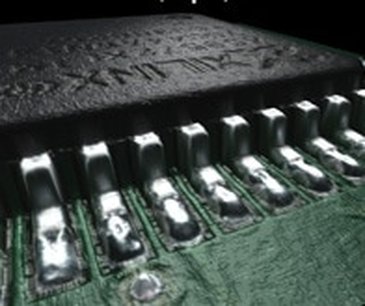
10.コンフォーマルコーティング
Some completed Printed Circuit Board Assemblies have a conformal coating. It's usually depends on the customer's product requirements.
11.最終検査と機能テスト
After the soldering and conformal coating step of the PCB assembly process is finished, a final inspection will test the PCB for its functionality by our Quality Assurance team. This inspection is known as a "functional test". The test software and tools are usually provided by the customer, PCBWay can also make fixtures according to customer requirements. The test puts the PCB through its paces, simulating the normal circumstances in which the PCB will operate. Power and simulated signals run through the PCB in this test while testers monitor the PCB's electrical characteristics.
12.Washing and Drying
Suffice it to say, the manufacturing process can be a filthy one. Soldering paste leaves behind some amount of flux, while human handling can transfer oils and dirt from fingers and clothing to the surface of the board. Once all is said and done, the results can look a little dingy, which is both an aesthetic and a practical issue.
13.荷作りと出荷
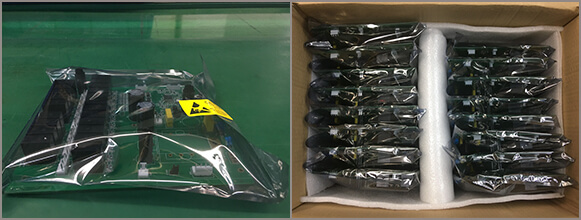
組み立てられたボードはすべてきちんと包装され(帯電防止パッケージで要求できます)、出荷されたDHL、FedEx、UPS、EMSなどです。 未使用のコンポーネントは、顧客の指示に従って返却されます。 さらに、パッケージが出荷されると、顧客に電子メールで通知されます。











